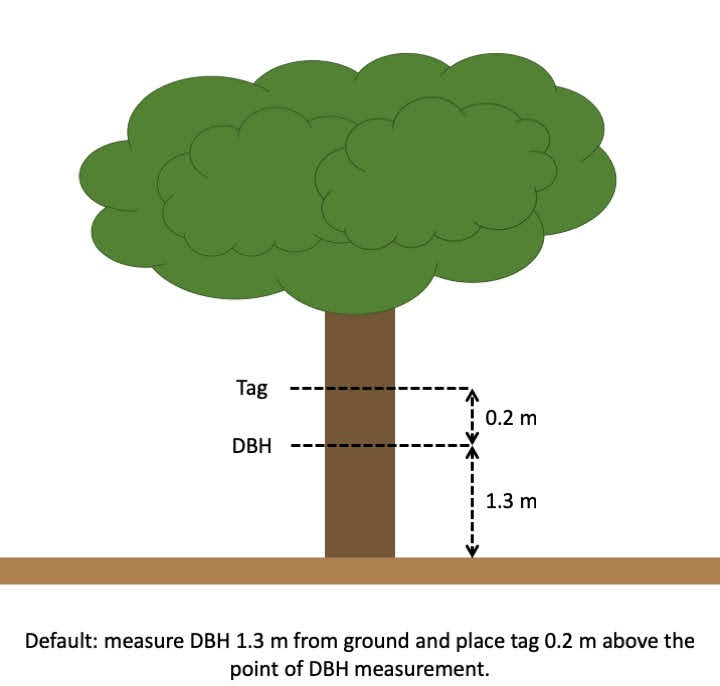TITLE: Diagrams for tree measurements
DATE: 2019-01-23
AUTHOR: John L. Godlee
====================================================================
In preparation for fieldwork I've been thinking a lot about how to
measure tree dimensions efficiently and accurately, in order to
estimate biomass. SEOSAW, which form the network of plots I am
working in, have amalgamated a lot of information from previous
data collection protocols with guidance from the many experts in
the group to come up with their own protocol for measuring tree
stems.
[SEOSAW]:
https://seosaw.github.io/
[protocol for measuring tree stems]:
https://seosaw.github.io/resources/SEOSAW_FieldManual_v3_2018.pdf
I decided to make some diagrams in order to better explain some of
the concepts in the protocol, specifically regarding the way that
tree trunk diameter (DBH) is measured. Measuring in the right place
is important as the diameter measurement is assumed to be
representative of the whole tree, and is used to estimate tree
biomass through allometric equations. Measuring in the right place
becomes doubly important when the same trees are re-measured over
the course of years in order to see how biomass has changed.
I was inspired partly by diagrams which I'd seen previously in
Winrock International's Standard Operating Procedures for
Terrestrial Carbon Measurement Manual.
[Standard Operating Procedures for Terrestrial Carbon Measurement
Manual]:
https://www.winrock.org/document/standard-operating-procedures-for-t
errestrial-carbon-measurement-manual/
Here are some of the diagrams I made:




Here is a pdf of all the diagrams with explanations